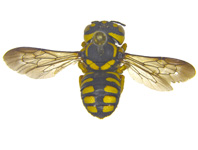Abstract
Hamilton (1822) described Cyprinus mosal, now assigned to the genus Tor, from the ‘Kosi’, a tributary of the Ganges. The fact that two Gangetic tributaries with the name Kosi exist, has resulted in confusion in the Indian ichthyological literature and beyond regarding the type locality of Hamilton’s T. mosal. A critical review of Hamilton’s treatise on the fishes of the Ganges, as well as several other works by and on Hamilton, revealed that T. mosal was collected in and described from the Kosi (=Koshi), a Gangetic tributary that originates in the northern slopes of the Himalayas in the Tibet Autonomous Region and drains the southern slopes of Nepal and Bihar (India); and not from the more western Gangetic tributary by the same name flowing through Ramnagar in Uttarakhand State, India.
References
Britz, R. (2017) Introduction and commentary. In: Hamilton’s Gangetic Fishes in colour. A new edition of the 1822 monograph, with reproductions of unpublished coloured illustrations. The Ray Society, London. (in press)
Britz, R. (2014) Francis Hamilton’s fishes from the Ganges. Available from: http://blogs.bl.uk/untoldlives/2014/03/francis-hamiltons-fish-from-the-ganges.html (accessed 6 June 2017)
Desai, V.R. (2003) Synopsis of biological data on the tor mahseer Tor tor (Hamilton, 1822). FAO Fisheries Synopsis 158. Food and Agricultural Organization, Rome, 36 pp.
Eschmeyer, W.N., Fricke, R. & van der Laan, R. (2017) Catalog of Fishes: Genera, Species, References Avaliable from: http://researcharchive.calacademy.org/research/ichthyology/catalog/fishcatmain.asp (accessed 5 May 2017)
Eschmeyer, W.N. (1998) Catalog of Fishes. Vol. 1–3. Special Publication. California Academy of Sciences, San Francisco, 2905 pp.
Gray, J.E. (1830–1835) Illustrations of Indian zoology; chiefly selected from the collection of Major-General Hardwicke. Vol. 1 & 2. Treuttel, Wurtz, Treuttel & Richter, London & Parbury, Allen and Co., London, 2pp., 1 + 100 pls. (1830–1832) & 2 pp., 102 pls. (1832–1835).Gudger, E.W. (1924) The sources of the material for Hamilton Buchanan’s fishes of the Ganges, the fate of his collections, drawings and notes, and the use of made of his data. Journal and Proceedings of the Asiatic Society of Bengal, 19 (1923), 121–136.
Hamilton, F. (1826) Some notices concerning the plants of various parts of India, and concerning the Sanscrita names of those regions. Transactions of the Royal Society of Edinburgh, 10, 171–186.
https://doi.org/10.1017/S0080456800024248Hamilton, F. (1822) An account of the fishes found in the river Ganges and its branches. Printed for A. Constable and company, Edinburgh & London, 405 pp.
https://doi.org/10.5962/bhl.title.59540Hamilton, F. (as Buchanan, F.) (1807) A Journey from Madras through the Countries of Mysore, Canara, and Malabar, Performed Under The Orders of The Most Noble The Marquis Wellesley, Governor General of India, For The Express Purpose of Investigating the State of Agriculture, Arts, and Commerce; the Religion, Manners, and Customs; The History Natural and Civil, and Antiquities, in the Dominions of the Rajah of Mysore and the Countries Acquired by The Honourable East India Company, in the Late and Former Wars, from Tippoo Sultan. Vols. 1–3. W. Bulmer and Co, London, 479 pp.
Hamilton, W. (1826) The East India Gazetteer; containing particular descriptions of the empires, kingdoms, principalities, provinces, cities, towns, districts, fortresses, harbours, rivers, lakes, etc. of Hindostan and the adjacent countries, India beyond the Ganges, and the Eastern Archipelago etc. John Murray, London, 862 pp.
Hora, S.L. (1940) The game fishes of India. X. The mahseers or the large-scaled barbels of India. III. The Mosal mahseer, Barbus (Tor) mosal (Hamilton). Journal of the Bombay Natural History Society 41 (3), 784–794.
Hora, S.L. (1929) An aid to the study of Hamilton Buchanan's Gangetic Fishes. Memoirs of the Indian Museum, 9 (4), 192 pp.
Jayaram, K.C. (2010) Freshwater fishes of the Indian region. 2nd Edition. Narendra Publishing House, New Delhi, 616 pp.
Khare, P., Mohindra, V., Barman, A.S., Singh, R.K. & Lal, K.K. (2014) Molecular evidence to reconcile taxonomic instability in mahseer species (Pisces: Cyprinidae) of India. Organisms Diversity & Evolution, 14 (3), 307–326.
https://doi.org/10.1007/s13127-014-0172-8M’Clelland, J. (1839) Indian Cyprinidae. Asiatic Researches, Calcutta, 19 (2), 217–471.
Pinder, A.C. & Raghavan, R. (2013) Conserving the endangered mahseers (Tor spp.) of India: the positive role of recreational fisheries. Current Science, 104 (11), 1472–1475.
Prain, D. (1905) A sketch of the life of Francis Hamilton (once Buchanan). Annals of the Royal Botanic Garden, 10, i–lxxv.
Raghavan, R. & Dahanukar, N. (2015) Taxonomy matters. Current Science, 108 (8), 1416–1418.
Sarma, D., Singh, A.K. & Akhtar, M.S. (2016) Mahseers in India: resources, breeding, propagation, conservation, policies and issues. Directorate of Coldwater Fisheries Research, Bhimtal, 168 pp.
Sen, T.K. & Jayaram, K.C. (1982) The mahseer fishes of India: a review. Records of the Zoological Survey of India, 39, 1–38.
Stone, R. (2007) The last of the leviathans. Science, 316, 1684–1688. https://doi.org/10.1126/science.316.5832.1684
Talwar, P.K. & Jhingran, A.G. (1991) Inland fishes of India and adjacent countries. Vols. 1–2. Oxford & IBH Publishing, New Delhi, Bombay, Calcutta, 1158 pp.
Vishwanath, W., Lakra, W.S. & Sarkar, U.K. (2007) Fishes of North East India. National Bureau of Fish Genetic Resources, Lucknow, 264 pp.

